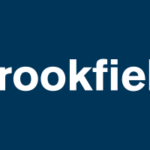McDonald's Corporation (MCD) Stock Analysis
11.02.2025
1. Company Overview
Business Profile and Industry Position
McDonald’s Corporation is one of the world’s leading global quick-service
restaurant (QSR) operators, serving millions of customers daily in over 100
countries. Operating primarily in the fast-food industry, McDonald’s is known
for its iconic menu offerings—including burgers, fries, and breakfast items—and
for pioneering the franchise model. The company’s widespread brand recognition
and extensive global footprint secure its competitive position among both
domestic and international peers.
Core Business Segments and Products
- Restaurant
Operations: The company’s core business includes
both company-owned and franchised restaurants. - Menu
Innovation: Constantly evolving menu items and
limited-time offers help maintain customer interest and drive traffic. - Digital and
Delivery: Investments in digital ordering, mobile
apps, and partnerships with third-party delivery services support growth
in off-premise sales.
Strategic Initiatives
- Global
Expansion & Modernization: McDonald’s continues to modernize its
restaurants with digital kiosks, enhanced drive-thru capabilities, and
remodeling initiatives to improve the customer experience. - Innovation
& Technology: Emphasis on technology solutions—from
mobile ordering to AI-driven drive-thru systems—helps optimize operations
and better serve changing consumer demands. - ESG
Commitments: The company has increased focus on
sustainability and social responsibility, including initiatives in
responsible sourcing, waste reduction, and energy-efficient operations. - Strategic
Partnerships: Collaborations with technology firms and
logistics partners have bolstered its digital and delivery channels.
2. Financial Performance
Revenue & Growth
- Latest
TTM Revenue: McDonald’s generated approximately $25.92 billion in revenue over
the trailing twelve months.
- Historical
Trends: The company has delivered stable revenue
over the quarters, with periodic year-over-year adjustments (e.g., modest
increases and occasional slight declines) reflecting both market dynamics
and the impact of strategic pricing and operational changes.
Profitability Metrics
- Net Income & EPS: With a trailing net income of about $8.22 billion and earnings per
share (EPS) of $11.39,
McDonald’s continues to exhibit strong profitability.
- Profit
Margins:
- Gross Margin: Approximately 56.76%
- Operating Margin: Around 45.73%
- Net (Profit) Margin: Near 31.72%
- Return
Measures:
- Return on Assets (ROA): Roughly 13.31%
- Return on Invested Capital (ROIC): In the mid-teens to low 16% range
- Return on Capital Employed (ROCE): Approximately 23.10%
Cash Flow Generation
- Operating Cash Flow: Approximately $9.45 billion in the latest period, underlining robust cash
generation capabilities.
- Capital Expenditures: Reported near -$2.78 billion, reflecting ongoing investments in technology
and restaurant modernization.
- Free Cash Flow (FCF): With a FCF of about $6.67 billion (or $9.31
per share), McDonald’s demonstrates significant capacity to return cash to shareholders
through dividends and share repurchases.
3. Balance Sheet Analysis
Asset & Liability Structure
- Cash & Equivalents: Approximately $1.09 billion in liquidity.
- Total Debt: Stands at about $51.31 billion, which is common for a mature, capital‐intensive franchise business.
- Net Cash Position: The company reports a net cash (debt) position
of roughly –$50.23 billion,
or about –$70.09 per share.
Equity and Working Capital
- Shareholders’ Equity: Reported as negative (approximately –$3.80 billion) largely due to
the historical accumulation of intangible assets and goodwill from
acquisitions, a phenomenon not uncommon in the restaurant industry.
- Working Capital: Positive at around $738 million, indicating adequate short-term liquidity.
Liquidity and Leverage Metrics
- Current
Ratio: Approximately 1.19, suggesting that current assets comfortably cover
current liabilities.
- Quick
Ratio: Around 0.90, which is acceptable given the nature of McDonald’s
asset structure.
- Debt
Ratios:
- Debt/EBITDA:
Approximately 3.36, and
- Debt/FCF: Near 7.69
These ratios reflect the company’s reliance on debt financing; however, its strong cash flow generation helps mitigate liquidity concerns.
4. Valuation
Market Valuation Multiples
- Market
Capitalization: Approximately $221.02 billion
- Enterprise
Value: About $271.25 billion
- PE
Ratios:
- Trailing PE: 27.08
- Forward PE: 24.88
- Other
Multiples:
- Price-to-Sales (P/S) Ratio: 8.59
- Price-to-Free Cash Flow (P/FCF)
Ratio: 33.13
- PEG Ratio: 4.89
(indicating that, relative to earnings growth expectations, the stock is
trading at a premium)
- EV/EBITDA: 21.33
Relative Valuation
While McDonald’s valuation
ratios (e.g., PE and EV multiples) are higher than some industry peers, these
multiples are supported by its strong market position, robust margins, and
consistent cash flow generation. The dividend yield of 2.30% adds to the overall attractiveness, particularly for
income-focused investors.
5. Market Performance
Price Performance and Trading Metrics
- 52-Week Range: The stock has traded between $243.53 and $317.90 over the past
year, reflecting moderate volatility.
- Recent Price Activity: With a recent closing price around $308.42, the stock has delivered
a positive return over the last 52 weeks (+6.55%).
- Beta: A
beta of 0.74 indicates
lower volatility relative to the broader market.
Volume and Short Interest
- Average Trading Volume: The stock’s trading volume is robust (e.g.,
around 7.1 million shares on recent trading days), supporting liquidity.
- Short Interest: Approximately 9.67 million shares (1.35% of the float) are sold short, with
a days-to-cover ratio of 3.27,
suggesting moderate short-term skepticism relative to overall market
sentiment.
6. Financial Health & Risks
Strengths
- Robust Cash Flow Generation: Strong operating and free cash flows provide the company with the ability to service debt, invest in growth initiatives, and maintain a stable dividend payout.
- High Profitability: Exceptional margins and returns on capital underscore operational efficiency and pricing power.
- Brand Strength and Global Reach: McDonald’s strong brand, extensive global network, and proven franchise model offer competitive advantages that are difficult to replicate.
Risks and Challenges
- High Leverage: With total debt exceeding $51 billion and a net cash position of around –$50 billion, the company’s balance sheet is heavily leveraged. Although sustainable in a high-cash-flow business, any
deterioration in operating performance or economic downturn could pressure debt-servicing capabilities. - Negative Book Value: The reported negative shareholders’ equity (driven by significant goodwill and intangible assets) complicates traditional book value analyses and can be a concern for some investors.
- Macroeconomic Sensitivities: Consumer discretionary spending, commodity price volatility, and regulatory changes (especially around labor and food safety) can impact sales and margins.
- Competitive and Operational Risks: The fast-food industry is fiercely competitive, and shifts in consumer preferences or operational challenges (e.g., supply chain disruptions) could affect profitability.
7. Conclusion
Summary of Key Takeaways
·
Strong Operating
Performance:
McDonald’s consistently generates robust revenues, earnings, and free cash
flow, backed by industry-leading operating margins and return metrics.
·
Valuation and Dividend
Appeal: Valuation
multiples are relatively high, reflecting market confidence in its brand and
growth potential. The stock also offers a steady dividend yield of 2.30%, supported by a history of
dividend growth over decades.
·
Balance Sheet
Considerations: Despite a
significant debt load and negative book value—a consequence of extensive
intangible assets—the company’s healthy cash flow generation provides comfort.
·
Risk Outlook: Investors should
remain mindful of macroeconomic headwinds, competitive pressures, and the
challenges inherent in managing a highly leveraged balance sheet.
Disclaimer:
This analysis is for informational purposes only and does not constitute investment advice. Investing involves risks, including potential loss of principal. Past performance is not indicative of future results. Consult a qualified financial advisor before making any investment decisions.






